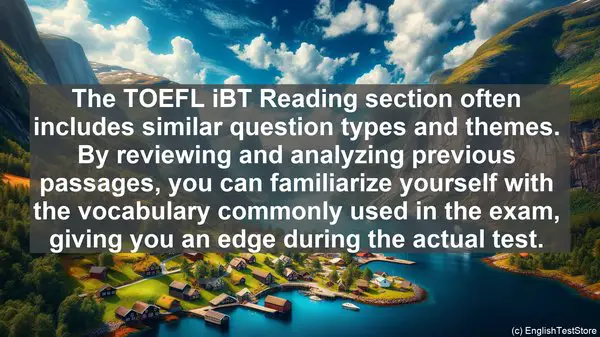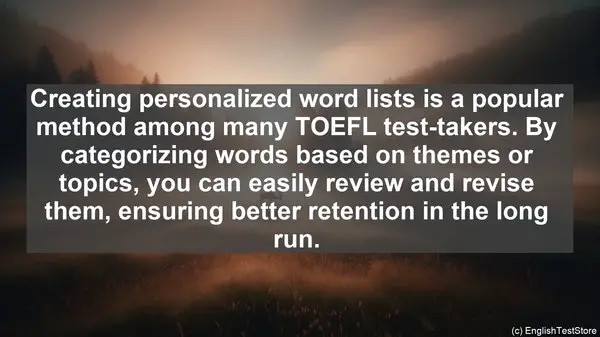Introduction to TOEFL iBT Reading
Welcome to today’s lesson. Before we dive into the top 10 methods for building vocabulary for the TOEFL iBT Reading section, let’s have a quick introduction to this important part of the exam.

Method 1: Reading Authentic Texts
One of the most effective ways to enhance your vocabulary is by reading authentic texts, such as articles, essays, and books. These materials expose you to a wide range of vocabulary in context, helping you understand word usage and meaning better.
Method 2: Using Vocabulary Apps
In today’s digital age, there are numerous vocabulary apps available that offer interactive and engaging ways to learn new words. These apps often include features like flashcards, quizzes, and word games, making the learning process enjoyable.
Method 3: Creating Word Lists
Creating personalized word lists is a popular method among many TOEFL test-takers. By categorizing words based on themes or topics, you can easily review and revise them, ensuring better retention in the long run.
Method 4: Utilizing Context Clues
Context clues are hints or information surrounding an unfamiliar word that can help you deduce its meaning. Developing the skill to identify and use context clues is crucial for the TOEFL iBT Reading section, where you may encounter unfamiliar vocabulary.
Method 5: Participating in Vocabulary Workshops
Vocabulary workshops, whether in-person or online, provide an excellent platform for interactive learning. These workshops often include activities like group discussions, word games, and exercises, which can significantly enhance your vocabulary skills.
Method 6: Watching Educational Videos
Watching educational videos, especially those related to academic subjects, exposes you to specialized vocabulary. Paying attention to the context and meaning of these words can be beneficial for both your general vocabulary and the TOEFL iBT Reading section.
Method 7: Engaging in Conversations
Having regular conversations, either in English or with English speakers, provides an opportunity to encounter new words and phrases. Actively listening and participating in these conversations can help you understand word usage and improve your own speaking skills as well.
Method 8: Reviewing Previous TOEFL Reading Passages
The TOEFL iBT Reading section often includes similar question types and themes. By reviewing and analyzing previous passages, you can familiarize yourself with the vocabulary commonly used in the exam, giving you an edge during the actual test.

Method 9: Subscribing to English Newsletters
English newsletters, especially those focused on academic or current affairs, provide a regular dose of vocabulary. Reading these newsletters not only keeps you updated but also exposes you to words that are commonly used in written English.
Method 10: Regular Vocabulary Practice
Last but not least, regular vocabulary practice is essential. Whether it’s through daily word exercises, quizzes, or even word puzzles, consistent practice helps reinforce your learning and ensures that you’re well-prepared for the vocabulary challenges in the TOEFL iBT Reading section.
